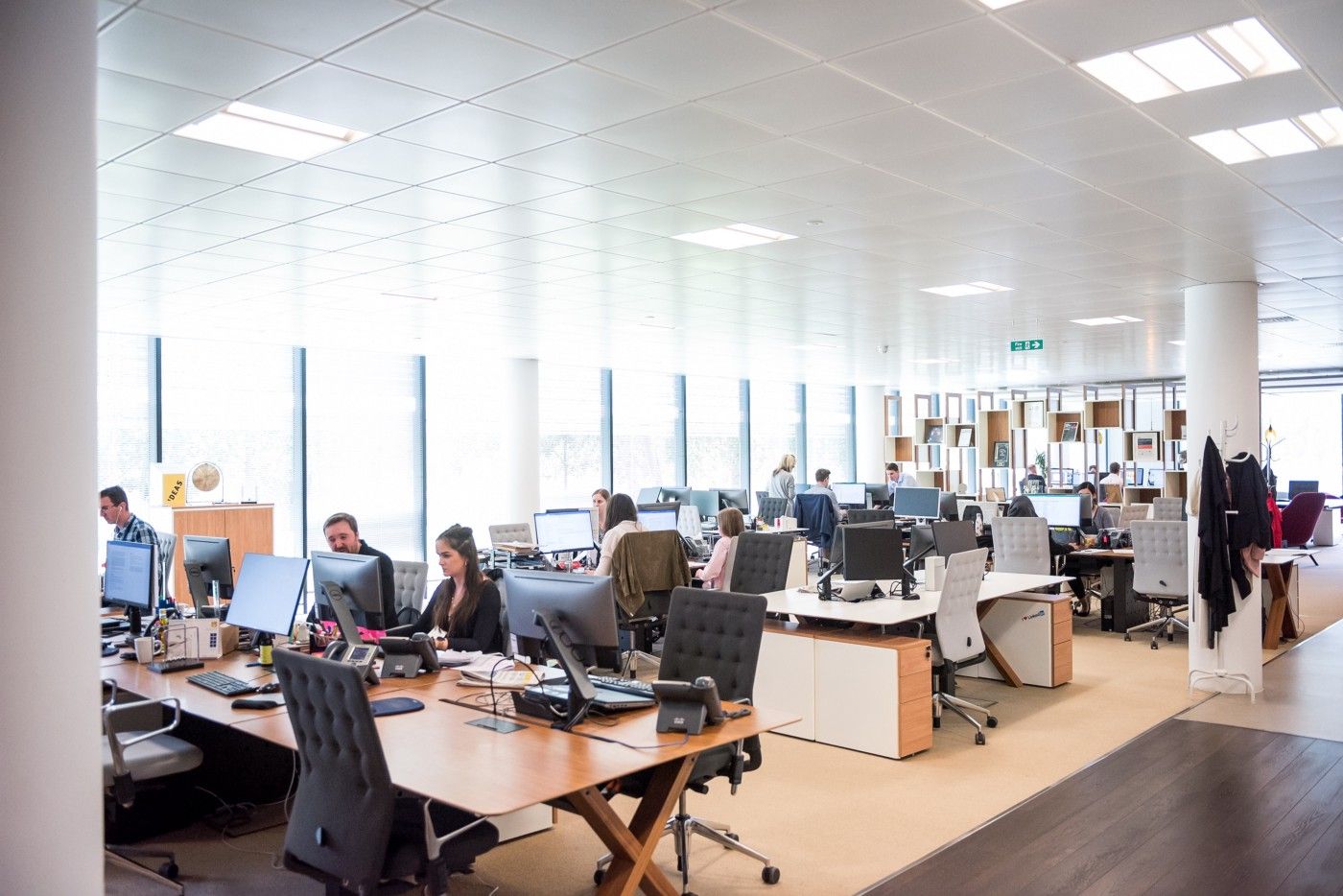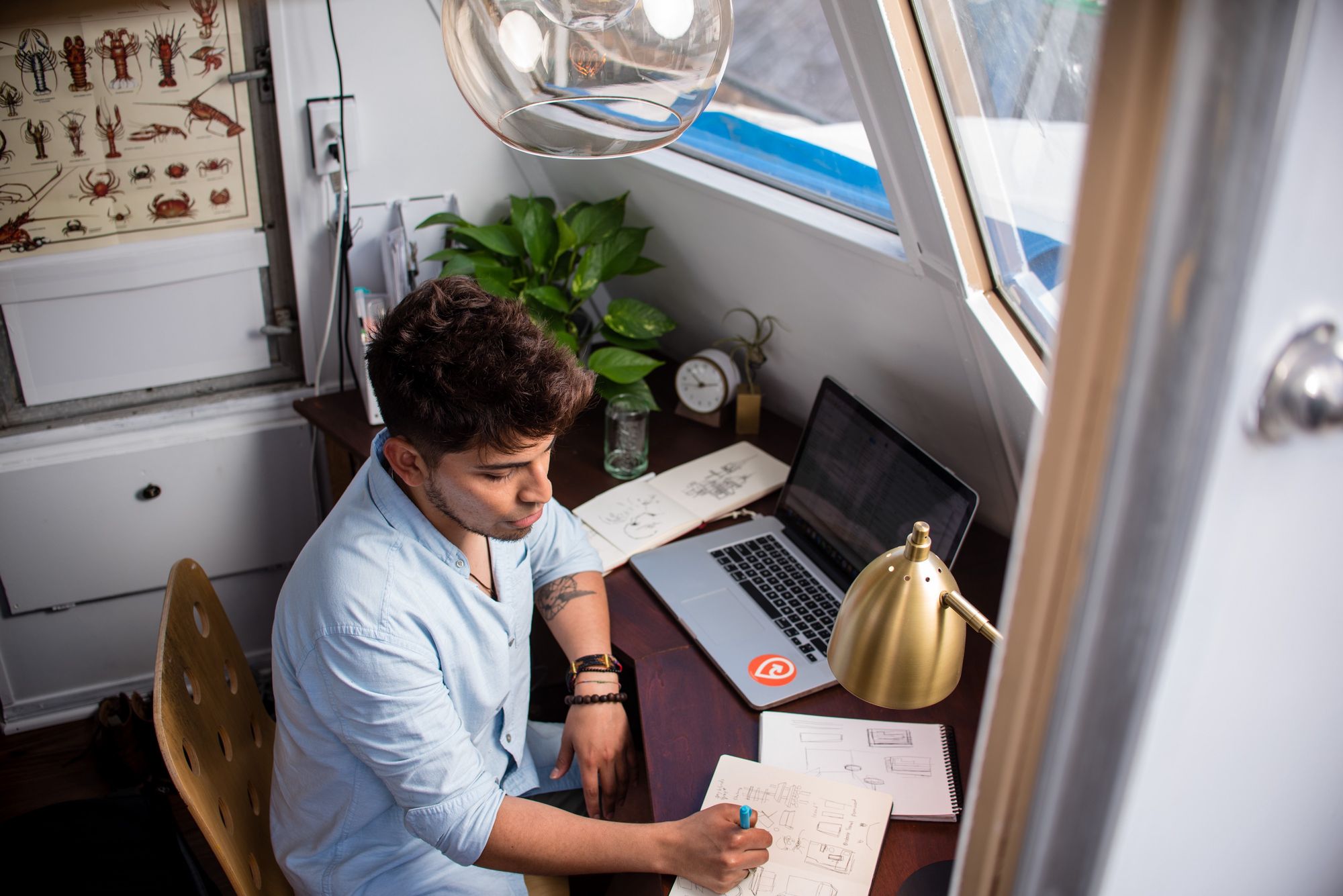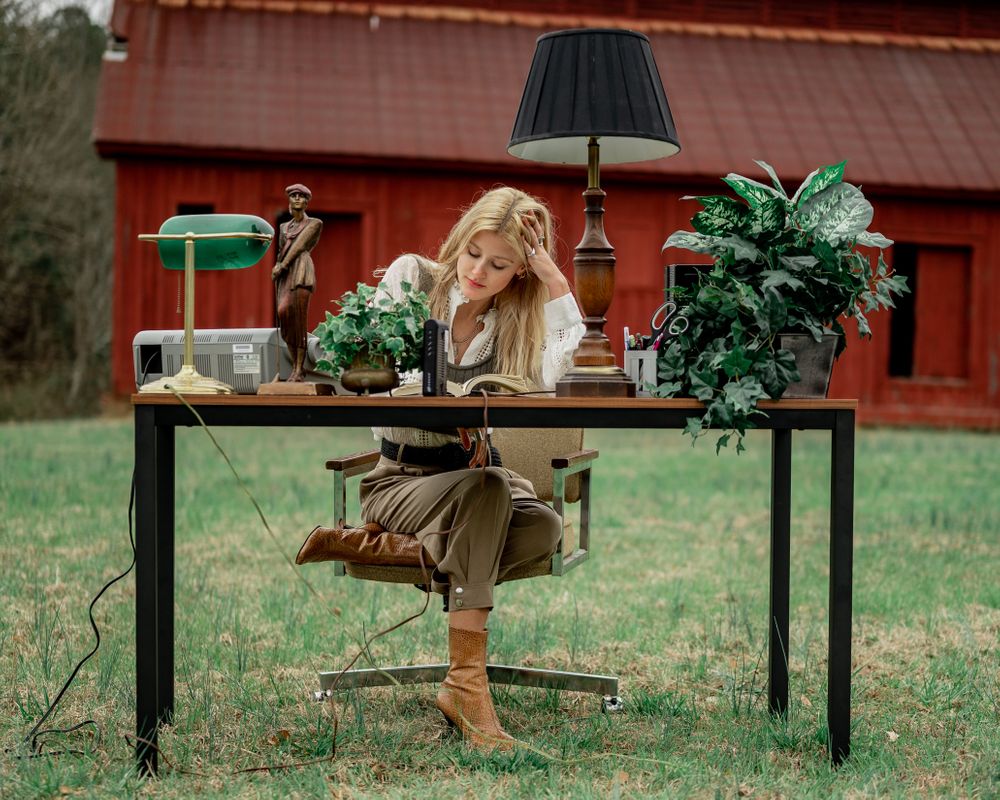Free-Range Work: Freedom of location
For productive knowledge-work we need to be more mindful about where we and our colleagues do our best work
In the Introduction to Free-Range Work I wrote about the necessary evolution of knowledge-work. Many organisations have tried steps from being co-located to homeworking, remote and distributed. But to do our best work, we need to go further — we need to go Free-Range, which involves three key freedoms.
- Freedom of location
- Freedom of time
- Freedom of responsibility
In this post, I’ll write about the first.
The freedom everyone thinks of when we talk about Free-Range Work is of location. But we’re not just talking about working from home, and we don’t think that working in an office is necessarily a bad thing.
We just think it’s a bad thing to be made to work in the same location for all types of tasks, in all states of mind, all day, every single day of the week. The same applies to offices, working from home, or any single location. Each is great for some things at some times, but not suitable for everything always. That’s why freedom is needed. (And this is why we on the Convivio team feel we’re missing out during lockdown too, when we’re having to work from home every single day!)
Free-Range Work is about working from the best place for doing the kind of work you need to do, in the frame of mind you’re in, considering the way you work best, and in balance with the needs of others.
In Convivio, that sometimes means working individually from home, cafés, workspaces, and so on. But on other days (outside of pandemics) it means some of us working in a client’s office, or a meeting room or workshop space we’ve hired. We also sometimes hire big country houses to take a team for a few days for some deep collaboration, country walks and good food.
We want to enable teams and individuals to make active, positive decisions about their work location, rather than having a rule about where work must be done. The company only expects presence in a particular location on four pairs of days during the year, for our quarterly retreats, and that location is carefully chosen too.
In addition to this, each project team may also agree a rhythm of regular co-working days, or plan special days for workshops, etc. in one location, with the understanding that everyone attends. But otherwise, the work is location-agnostic.
So Free-Range Work means that individuals, in consultation with their team colleagues and clients, decide where they can best do their work.
Trust
Being frank, most of the requirements from organisations and managers (and clients) for people to work in a particular place all the time are about trust (or lack of). They feel they need to see people working to know they are working.
This leads to a culture of presenteeism, with people seeking to be first in, last out, or to have the fewest breaks. People lunch at their desks or even skip lunch, just to be seen to be working so hard.
It also leads to busy-work — things getting done that really don’t provide any value — and a focus on activity over outcomes.
None of these are a good thing for an organisation.
In order to move to Free-Range Work, we first have to understand that it’s not about the time at the desk (I’ll write more on this in my next post in this series), or the amount of activity generated. It’s purely about what gets achieved. The outcomes.
Trust and a focus on outcomes are common themes throughout all the freedoms that underpin Free-Range Work.
Organisations, managers and colleagues all have to re-learn to trust others and focus on outcomes in order to be fully effective in a modern knowledge-work environment.
Locations
So let’s talk about some of the locations where work might get done…
Offices

Although we’re not set against offices, I feel it is important to talk about modern offices for a moment. The days when knowledge-workers had their own private quiet room, where they could close the door, open the window, and have some focused time are long gone. The last 40 years have seen organisations squeeze more people into ever smaller spaces. Cubicles, open plan, hot-desking — and what many big organisations have frustratingly called ‘agile working’ (translation: hey, what if we don’t provide you with a desk, but also don’t have the technology or culture to enable you to work outside the office?)
In one central government office I visited at the start of this year, they had two people working on each desk because of a space shortage!
Open-plan offices were dreamt up to save money, with the excuse of creating ‘collaborative’ spaces, but little empirical evidence to support the claim or guide the design. In 2018, though, the Royal Society published a paper that sought to test the claim by studying organisations transitioning to more open office spaces. The authors found that, “rather than prompting increasingly vibrant face-to-face collaboration, open architecture appeared to trigger a natural human response to socially withdraw from officemates and interact instead over email and IM.” They found face to face interaction fell by around 70%!
On top of this, there’s growing evidence that office buildings have become actively unhealthy for our bodies and minds (even in the pre-Covid age!) So many workstations lack one or more of the essentials list: natural light, fresh air, suitable temperatures, healthy background noise levels, ergonomic furniture, suitable computer equipment, good connectivity.
The background noise issue is no small problem. Ventilation, computers, printers and so on, overlaid with a constant hubbub of chat and phone calls — and then people randomly popping by to ask things. It’s really hard to get into the zone.
In terms of connectivity, I did a project in the head office of a UK broadcaster. Their digital team had secretly had an ADSL broadband line installed and set up their own Wi-Fi, because the official network was so locked down by corporate IT, and had such poor coverage and reliability that they simply couldn’t do their work. (In government, though, kudos should go to the GovWifi team for doing great work towards improving this.)
Beyond this are the availability of things we need to do knowledge-work — meeting rooms, project rooms (the dream!), and wall space that you’re actually allowed to put things up on.
Apart from the difficulty of booking meeting rooms in the first place, we’ve all done the meeting room shuffle: “Oh. Have you booked this room? We thought we had? Ok. We can move next door. Oh, someone’s in there. Let’s wander round the building. Hmm, no spaces. Ok, let’s go to the café.”
Organisations provide far too few meeting rooms for the level of collaboration that needs to happen.
There’s no point all commuting to the same building if you can’t meet together in appropriate spaces.
And, by appropriate spaces for meeting rooms, I mean: natural light; good airflow; good Wi-Fi; enough space to fit everybody comfortably around a table as well as enough space for people to gather round a wall; a big enough TV screen(s) for the size of the room; sound isolation from outside the room; and walls you can put sticky notes or posters, or other 'information radiators' on. As. A. Minimum.
The modern office is not the hive of productive collaboration that it’s billed as. It is great to have a common place to regularly meet, and sometimes co-work — but most offices are simply not suitable for all types of people, doing every type of work in, all day, every day.
Offices could be great spaces for collaborative knowledge-work, but organisations chose cheaper instead. If you want to see some knowledge-work offices that have been thoughtfully designed rather than designed with productive knowledge-work over cost-cutting, take a look at Fog Creek Software.
Home offices

Most home offices are not suitable for permanent working. Too many people work from kitchen tables or sofas. That’s fine if you fancy working there for a few hours, but it is not a daily place of work.
If an organisation is going to encourage more working from home, or it’s going to be needed for an extended period during the pandemic, there needs to be more thought and investment about creating the workspace.
The same requirements apply: natural light, good ventilation, ergonomic furniture and good technology.
We encourage (and expect) staff members to have a dedicated work area at home, and will fund a very good desk and chair, high-spec laptop, external monitor and keyboard, and more.
Unfortunately HMRC rules on employee ‘benefits in kind’ are still really not geared up to support employers providing good financial support for working from home, so we’re fairly restricted in what we can fund or provide. For example, we can’t pay for the broadband connection without employees then having extra paperwork and tax implications. In the end we chose to set our salary levels to reflect that there is some level of cost in having a home office (in addition to this, staff save on substantial commuting costs.)
Cafés and co-working spaces

Cafés and other spaces with a mix of people around can be great places to go to work for a bit if you fancy some buzz that you can tune out of, a change of scene, and good coffee.
But they are not suitable for job interviews, sensitive meetings, or video calls. And they are not suitable for working in all day every day because of ergonomics, noise levels and so on. They’re great locations for reading and writing work though, or ploughing through your inbox.
Free-Range Work is about working from the best place for doing the kind of work you need to do, in the frame of mind you’re in, considering the way you work best, and in balance with the needs of others.
Co-location co-location co-location
Let’s lay this old canard to rest. I sometimes hear people say, or read procurement documents that say, that the team must be co-located Monday-Friday 9–5 ‘because of Agile.’
The Agile Manifesto mentions nothing about co-location. It says ‘we value Individuals and interactions over processes and tools’. In a supporting document about principles behind the manifesto it says ‘The most efficient and effective method of conveying information to and within a development team is face-to-face conversation.’
That was written in February 2001 when the fastest internet you could hope to get for a home office was an expensive ISDN connection at 128kbps, otherwise most home connections were limited to 56kbps. Now most people have at least 20Mbps. Video calls were simply not possible when these principles were written, and now we can do them with ease even on our mobile phones. We can see each other and chat.
But more than that, Free-Range Work is not about always working in different locations from each other. The whole idea is that when it’s important to get together, or just when you want to, you do! You just don’t do it unnecessarily because there’s a requirement or expectation.
My colleague Ángela describes meeting in person as 3D, and meeting on a video call as 2D. I think that’s a great way to think about it. Like with movies, there are only some that are worth going to a special cinema and paying more to see in 3D.
What meetings do you need that extra dimension for? For most things 2D is just great, and the cost and effort to move to 3D isn’t worth the extra dimension.
And let’s remember that the Agile Manifesto principles also include:
- Build projects around motivated individuals. Give them the environment and support they need, and trust them to get the job done.
- At regular intervals, the team reflects on how to become more effective, then tunes and adjusts its behavior accordingly.
Where the team works should be entirely up to the team and individuals in it. That’s Free-Range Work.
Not all work looks like work
In the TV series Mad Men, about the boom years of the advertising business, I always remember that there were a number of times that people would comment to Don or Peggy, the creative geniuses, along the lines of “I can’t get over that most of the work you do doesn’t look like work.”
They’ll be dozing on the sofa in their private office (see how much offices have changed?!) when suddenly their brain makes the vital connections to give them the perfect concept for an ad, or they’ll be at a party, having dinner, or some other everyday part of life. Very infrequently does the inspiration hit when they are sitting at a desk. In the very first minutes of the first episode Don gets the inspiration while idly chatting to a busboy in a cocktail bar. The key is not that he was in a bar, but that he was out in the world gaining insight and inspiration from a wider range of people.
That series is obviously fiction, but based on memoirs of the time, and I think we can all recognise the truism that the best work doesn’t always happen at a desk, and it doesn’t always look like work.
In Free-Range Work we need to embrace this and spend more time walking, sitting and thinking, reading, and simply being out in the world chatting to a wider range of people.
The needs of others
Free-Range Work is not an individualistic approach in which everyone goes off and works wherever they feel like without restriction.
Work is not a single-player game, it’s all about the team. Therefore each person must consider the needs of others in balance with their own, so the team performs at its best. Does someone need some buddy support, working in the same place or at least being available? Does someone else need support to enable them to get some quiet time? Does the team really need to all get together for a workshop or a key meeting to synchronise and plan?
Achieving a good balance is all about open and honest communication within the team, and should be considered and regularly improved at retrospectives.
Real life and real people
Organisations have wised-up about the benefits of having a more diverse workforce, but are still expecting people with all sorts of different circumstances to have exactly the same worklife. The square peg gets bashed into the round hole, and friction and stress result.
Someone with carer responsibilities might not be able to take a job that requires them to travel an hour each way into London, every single day, and keep rigid hours. Some people might struggle with the costs of London living or commuting on top of the costs of childcare.
Becoming a Free-Range Workplace lays the groundwork for opening up to welcome people to your organisation who have a whole mixture of life circumstances. They can live in different places, can be close to their children’s school for dropoff/pickup/emergencies, can avoid the expense of city centres or long commutes, can better support their partners and families, can be a bigger part of their local community, and more. And it will enable your organisation to have a greater diversity of people, enriching the perspectives, ideas and decision-making.
It doesn’t require a workforce of young single people from well-off backgrounds with no responsibilities, or those who choose to put a career first above other parts of a healthy life.
Freedom of location opens the door to being an organisation full of real people with real lives.
Summary
- Where work can be done most effectively depends on the person, the context, the work, and various other factors. It doesn’t make sense for the organisation to prescribe and restrict the places where work can be done.
- Productive knowledge-work is not about time at a desk, or the appearance of busyness. It’s about the outcomes achieved.
- Modern organisations should design the way they work to enable team members to work from wherever is the best place to do their work on any particular day, in balance with the needs of others. They should leave it up to teams to organise their work locations. Team members should consider the needs of the wider team in balance with their own.
- It’s all about trust. If an organisation and its management don’t trust a staff member, they shouldn’t employ them. If they do trust them, they should set them free.
Freedom of location is the first of the three freedoms of Free-Range Work. In the next post in this series we’ll look at freedom of time.
This post was originally published at https://blog.weareconvivio.com/free-range-work-freedom-of-location-425204dc27a2
Main photo of a woman working at a desk outside a barn by Jeffery Erhunse
